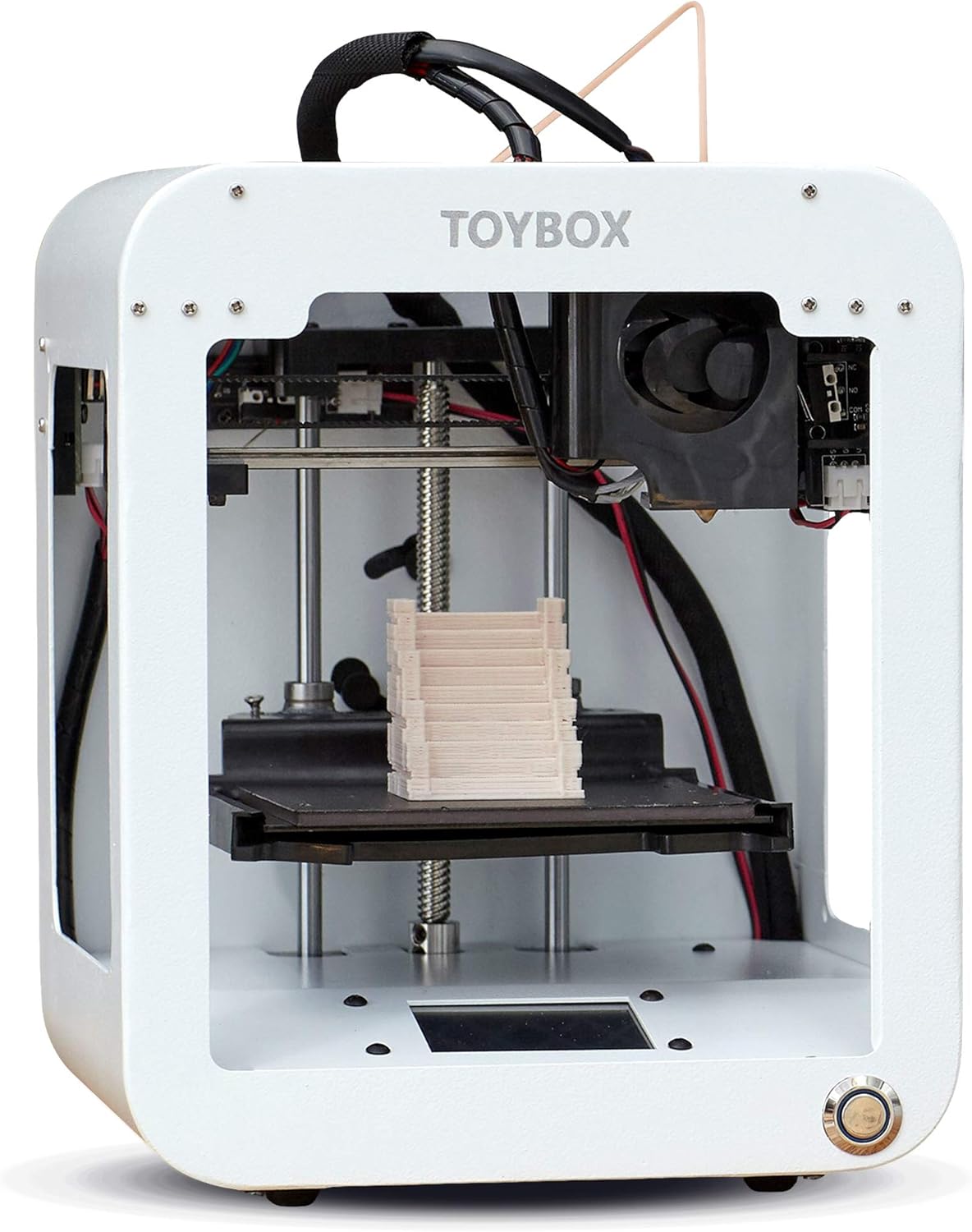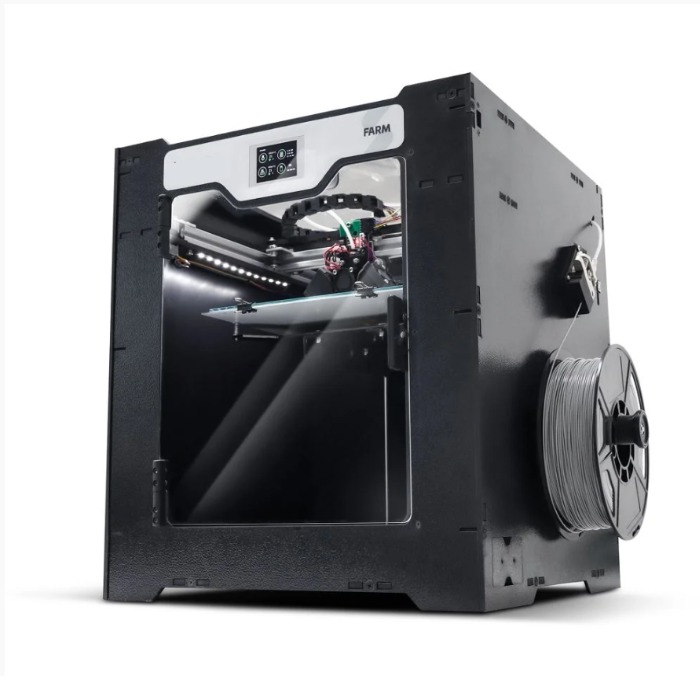Compare Toybox vs FARM
Comparison between the best 3D printers
Choose the best 3D printer at the best price. The cheapest 3D printers are here.
Buy a 3D printer here with 3D Fila.
 |
 |
|
| Model | Toybox[BUY Toybox] |
FARM |
| Printing Material | Filament | Filament |
| Buy Filament for Toybox Toybox | Buy Filament forSethi 3D FARM | |
| Estimated price | $299,00 | $1127,00 |
| Manufacturer | Toybox | Sethi 3D |
| Release Year | 2024 | 2021 |
| Print Volume [mm] | 70x80x90 | 240x240x240 |
| Printer Size [mm] | 190x190x230 | 550x42x500 |
| Weight [kg] | 3 | 15,7 |
| Power Loss Recovery | NO | YES |
| Enclosed printer | NO | YES |
| Bed Leveling | Manual | Automatic |
| Filament End Sensor | NO | YES |
| Bed type | Heated | |
| Power supply system | Direct Drive | Bowden |
| Standard nozzle | 0,5 | 0,4 |
| Maximum Nozzle Temperature [°C] | 210 | 270 |
| Maximum Bed Temperature [°C] | 120 | |
| Maximum printing speed [mm/s] | 60 | 80 |
| Filament holder | YES | YES |
| Camera for supervision | NO | NO |
| Recommended filaments | PLA | PLA, PETG, Tritan, Flex, ABS |
| Recommended slicers | Toybox | Cura, Simplify, Slic3r |
| Maximum Resolution [mm] | 0,2 | |
| Processor | ||
| Display | Touchscreen 2,4'' | Touchscreen TFT |
| Power Supply | 450 W | |
| Connectivity | Wi-fi | USB |
| Operating systems | iOS, Android | Windows, Mac, Linux |
| Date of registration in the system | 2024-08-06 | 2022-10-11 |
| Release date | 2024 | 2021 |
| Extra features | The Toybox 3D printer is an excellent option for children and beginners. Easy to use, with intuitive setup and simplified operation via an app. The Toybox allows you to print thousands of toys and projects through a user-friendly interface. It has a removable magnetic table that makes it easy to remove printed objects. The filament is PLA, safe for children, and the printing is reliable and error-free. It also offers custom design options, allowing you to create and print drawings and photos. | Sethis Farm printer offers a generous 240 x 240 x 240 mm print area, ideal for large projects. Its intuitive touchscreen display makes it easy to operate, while the intelligent sensor prevents problems by detecting filament shortages or jams. Its power recovery feature allows you to resume printing after interruptions. It stands out for its 9-point optical auto-leveling and high-performance heated bed, ensuring accuracy and versatility on different materials. Its 32-bit electronics and silent drivers promote a smooth and efficient experience. In addition, the Farm has a closed cabinet, expanding the range of usable polymers, and a turbo cooling system to speed up the process between prints. The machine also offers practicality with a storage drawer and simplified software updates. |
| Support for multiple colors and materials (AMS and CFS) | NO | NO |
Notes * |
||
| Cost-benefit | 6 / 10 | 6 / 10 |
| Hardware | 0.9 / 10 | 3 / 10 |
| Tela | . | . |
| Print volume | 3 / 10 | 3 / 10 |
| Performance | 0 / 10 | 0 / 10 |
| [BUY Toybox] |
Conclusion |
| In comparing the Toybox and Sethi 3D FARM printers, two distinct 3D printing experiences emerge, catering to different user needs and preferences. The Toybox printer, with its lower price point, is specifically designed for children and beginners. Its compact build and user-friendly app interface offer an engaging introduction to 3D printing, making it ideal for creating toys and simple projects. However, its smaller print volume and lack of advanced features like automatic bed leveling and power recovery may limit its capability for more complex tasks. On the other hand, the Sethi 3D FARM printer, though significantly more expensive, presents a robust solution for serious hobbyists or professionals. It offers a much larger print volume, advanced functionalities such as automatic bed leveling, power loss recovery, and a closed design for enhanced material versatility. These features, combined with a touchscreen interface and compatibility with a wider range of filaments, contribute to a more versatile and powerful printing experience. Ultimately, the choice between the Toybox and Sethi 3D FARM comes down to the user's priorities. If affordability and ease of use for beginners are paramount, the Toybox serves as an excellent entry-level option. Conversely, those seeking larger builds and professional capabilities may find the investment in the Sethi 3D FARM to be justified. Each printer has its strengths, and the decision should align with the intended use and budget constraints of the user. |

